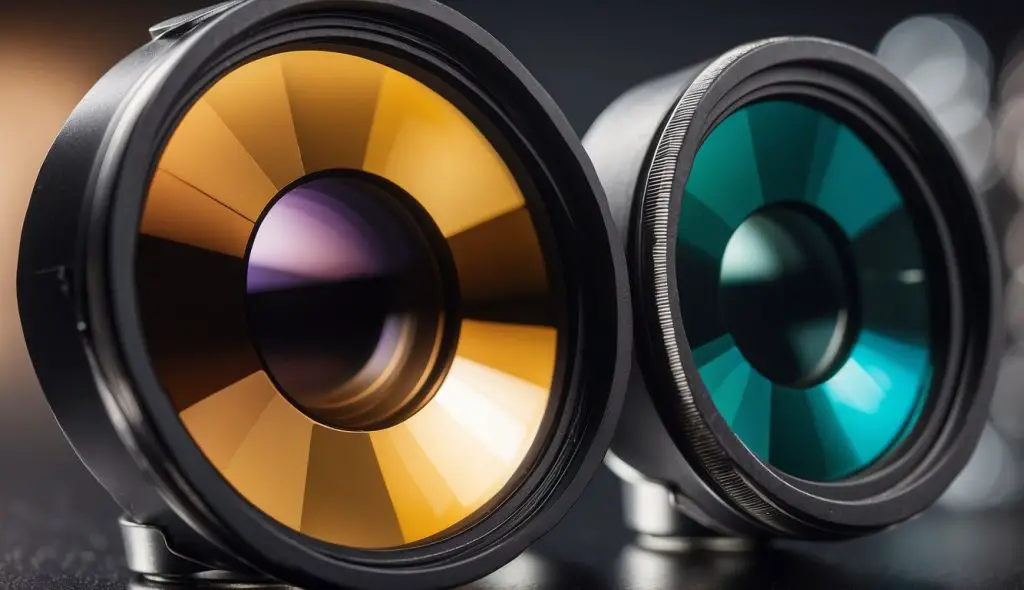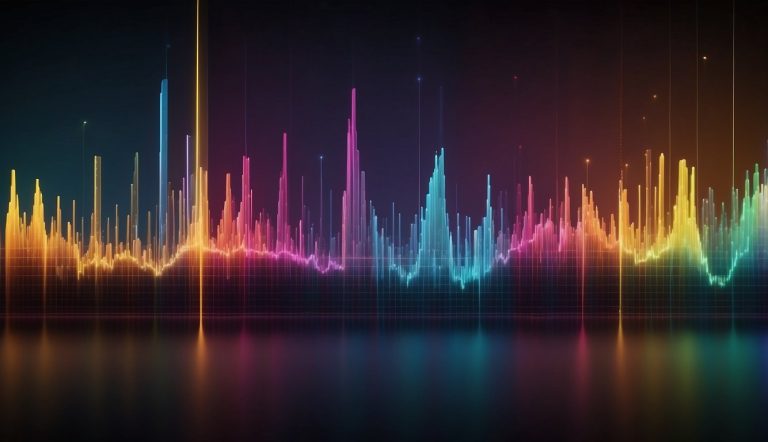High Pass vs Low Pass Filter: Understanding Audio Frequency Filters
In the realm of audio and signal processing, filters play an absolutely crucial role in shaping the sound we hear and record. High pass and low pass filters are two fundamental types of filters that are used to manipulate audio signals by allowing certain frequencies to “pass” through while attenuating others.
A high pass filter, as the name implies, permits frequencies above a certain cutoff point to pass through, effectively removing lower frequencies. This type of filter is useful when it’s necessary to reduce rumble, or to let high frequencies, like the crispness of a hi-hat or the clarity of speech, cut through the mix.

On the other hand, a low pass filter does the opposite by permitting frequencies below a specific cutoff point while attenuating higher frequencies. This can be incredibly useful to eliminate unwanted high-frequency noise or to emphasize the warmth and fullness of bass-heavy sounds.
Both filter types are fundamental tools for audio engineers, providing the means to sculpt the tonal balance of the audio. Whether it’s cleaning up the muddiness in a mix or isolating certain frequency ranges, the proper use of high pass and low pass filters can dramatically improve the clarity and quality of the sound.
Key Points
- I understand how high and low pass filters selectively permit frequencies.
- I use filters to enhance the quality and clarity of audio recordings.
- I often balance tonality in audio engineering with both types of filters.
Table of Contents
Fundamentals of Sound Filtering
In my exploration of sound filtering, I’ll shed light on how filters shape audio by allowing certain frequency ranges to pass while blocking others. Understanding these concepts is crucial for anyone interested in audio design or manipulation.
What Are Filters?
Filters are essential tools in my audio toolkit that enable me to manipulate sound by controlling which frequencies are allowed to pass through. There are two primary types of filters I commonly use:
- High-Pass Filters (HPF): These allow frequencies above a certain cut-off frequency to pass while attenuating lower frequencies. They’re used to eliminate rumble or reduce boominess.
- Low-Pass Filters (LPF): Conversely, these permit frequencies below a set cut-off frequency to pass and attenuate higher frequencies. I use them to cut out hiss or reduce harshness.
The cut-off frequency is a pivotal concept—it’s the specific frequency where the filter begins to significantly attenuate the signal.
Understanding Frequency
Frequency, measured in Hertz (Hz), determines the pitch of a sound. I think of frequencies in two ways:
- Low Frequencies: These are the bass tones in audio, giving warmth and depth, but can also cause muddiness if not managed properly.
- High Frequencies: These provide clarity and detail to a sound but can result in harshness or tininess when excessive.
| Frequency Range | Common Sounds |
|---|---|
| Below 250 Hz | Bass, kick drums |
| 250 Hz to 2 kHz | Fundamental speech |
| Above 2 kHz | Cymbals, sibilance |
When I design audio filters, I carefully consider the frequency responses I’m aiming for to achieve the desired sound characteristics, always mindful of my sound’s intended context and the listener’s experience.
High Pass Filters
In my experience, high pass filters are crucial components in various electronic applications where it’s necessary to block low-frequency signals and allow high-frequency ones to pass through.
Characteristics of High Pass Filters
High pass filters effectively attenuate frequencies below a certain cutoff frequency, allowing higher frequencies to pass. The cutoff frequency is determined by the filter design, particularly the values of the resistor (R) and capacitor (C) or inductor (L).
A key characteristic of these filters is how sharply they can transition from blocking to passing signals, known as the slope or roll-off rate. An ideal high pass filter would instantly transition from full attenuation to no attenuation at its cutoff frequency.
- Reactance: As frequency increases, the reactance of the capacitor decreases, making it easier for the signal to pass.
- Gain: High pass filters in amplifiers can control the gain for high-frequency signals.
The performance of a high pass filter is often visualized using frequency response curves, where the x-axis represents frequency and the y-axis represents gain or output level.
Applications of High Pass Filters
High pass filters are found in numerous applications:
- Audio Processing: I’ve used them to remove low-frequency rumble or hums from audio recordings.
- Communication Systems: They’re essential for allowing high-frequency data signals to pass while blocking interference from lower frequencies.
- Radio Voice Systems: High pass filters ensure the clarity of transmitted voices by eliminating low-frequency noise.
Designing a High Pass Filter Circuit
When I design a high pass filter circuit, I take into account the desired cutoff frequency and whether the filter should be passive or active.
- Passive High Pass Filter: This consists of a simple RC or LR circuit with no amplification component.
- Active High Pass Filter: These incorporate an amplifier, like an operational amplifier, and create a phase shift in the output signal. Active filters provide gain and can have sharper cutoffs.
The components are selected based on the following:
- Cutoff Frequency Formula: ( f_c = \frac{1}{2\pi RC} ) for an RC circuit.
- Component Quality: Choose low tolerance resistors and capacitors for precise filtering.
Low Pass Filters
Low pass filters are critical components in various electronic devices, allowing low frequencies to pass while attenuating the higher frequencies. My aim here is to give you an understanding of their characteristics, applications, and the basics of constructing a circuit.
Characteristics of Low Pass Filters
Low pass filters, as their name suggests, allow signals with frequencies lower than a certain cutoff frequency to pass through with little to no attenuation. Frequencies above the cutoff are significantly attenuated. The point at which the frequency starts to attenuate is determined by the filter’s design, specifically the impedance of the components like capacitors and resistors.
In the frequency domain, a low pass filter’s magnitude response starts high at zero frequency and gradually declines to zero.
Key components:
- Capacitor: Plays a role in creating the voltage drop necessary for filtering.
- Impedance: Affects the frequency response of the filter.
Operation: The filter works by causing a phase delay that increases with frequency, leading up to the cutoff point where higher frequencies cannot pass efficiently.
Applications of Low Pass Filters
I’ve noticed that low pass filters are widely used in audio processing to eliminate high-frequency noise or to achieve a ‘retro’ sound in songs by allowing only the lower frequencies to be heard. They’re essential in communication systems to prevent aliasing and signal distortion. Moreover, they’re used to remove high frequency reverb and echoes to ensure clarity in audio output.
- Audio Processing: Removing high frequencies to reduce noise or achieve a specific sound quality.
- Communication Systems: Ensuring signal fidelity by mitigating aliasing and distortions.
Designing a Low Pass Filter Circuit
Designing a low pass filter circuit involves selecting appropriate values for the resistors and capacitors that will define my cutoff frequency. Passive filters are the simplest to design, using just these two components.
The cutoff frequency can be calculated using the formula f_c = 1/(2πRC), where R is the resistance and C is the capacitance in the circuit.
To craft a first-order low pass filter, I’d place a capacitor in series with the load and a resistor in parallel. The voltage drop across the capacitor increases with higher frequencies, which results in attenuation.
Basic Steps:
- Choose my cutoff frequency.
- Calculate the resistor and capacitor values using the formula.
- Connect the resistor and capacitor in the correct configuration.
Comparative Analysis
When I examine high pass and low pass filters, I focus on their functionality in different frequency ranges and how choosing the correct one impacts the output.
Differences Between High Pass and Low Pass Filters
High pass filters (HPFs) and low pass filters (LPFs) serve opposite purposes in signal processing. I’ve seen that high pass filters allow frequencies above a certain cutoff frequency to pass through, effectively blocking lower frequencies. Example-wise, in audio amplifiers, they prevent low-frequency rumble or hum. In contrast, low pass filters do the reverse: they allow frequencies below a certain threshold to pass and block higher frequency components.
This difference in frequency range has a critical impact on the output voltage where, for instance, an LPF may preserve the desired signal by excluding high-frequency noise.
- High Pass Filter:
- Pass Band: Frequencies higher than cutoff
- Blocked: Low-frequency components
- Typical Use: Removing low-end noise
- Low Pass Filter:
- Pass Band: Frequencies lower than cutoff
- Blocked: High-frequency components
- Typical Use: Reducing high-frequency noise, aliasing effect
Circuit diagram: The design of a HPF and a LPF will include components like resistors and capacitors arranged to achieve the desired frequency filtering effect.
Selecting the Right Filter for Your Needs
Selecting between a high pass and a low pass filter requires understanding the specific needs of your application.
For image processing, I might use a high pass filter to sharpen an image by emphasizing edges and fine details. Meanwhile, a low pass filter can smooth an image to reduce detail and noise.
In the context of audio, an anti-aliasing filter, which is a type of LPF, is essential to prevent distortion before sampling.
When working with editing software such as Premiere Pro, I carefully consider these filters to achieve clean and polished output.
- Criteria for Selection:
- Intended Application: Audio, video, or image processing
- Desired Outcome: Eliminate unwanted frequencies or enhance certain frequency components
- Understanding Aliasing: Anti-aliasing LPFs for preventing distortion prior to digital sampling.
To illustrate, if my goal is to modify an audio track, knowing the specific frequency range I want to manipulate allows me to choose the appropriate tool for the task.
If low-frequency hum needs to be attenuated, a HPF is my go-to, whereas to prevent aliasing, an LPF becomes indispensable.
Frequently Asked Questions
In my exploration of filters, I’ve noticed certain questions come up frequently. Here, I’ve compiled answers that should clarify when and how to use these filters in various applications.
When should you use a high-pass filter in image processing?
I use a high-pass filter in image processing when I want to enhance the edges or fine details within an image. This is particularly useful for applications like edge detection or to sharpen an image by allowing high-frequency components to pass through.
What are the differences between a high-pass and a low-pass filter in audio systems?
In audio systems, a high-pass filter allows frequencies above a certain threshold to pass, which is great for eliminating rumble or low-frequency noise.
Meanwhile, a low-pass filter permits sounds below a specified threshold, which helps in reducing high-frequency noise or to mellow down the brightness of the sound.
How do high-pass filters function in vehicle electronics?
High-pass filters in vehicle electronics are typically used to process signals in the audio system. They allow the passage of higher frequency signals to speakers that are designed for treble. This ensures the reduction of distortion and protection of speakers from low-frequency damage.
What are the typical applications for low-pass filters in subwoofer setups?
I find low-pass filters crucial in subwoofer setups, as they permit only low frequencies to reach the subwoofer. This ensures that it only reproduces bass sounds and relieves smaller speakers from handling bass, thus improving the overall sound system performance.
How does a high-pass filter circuit differ from a low-pass filter circuit in terms of design?
In terms of design, a high-pass filter circuit usually consists of a capacitor followed by a resistor, while a low-pass filter typically has a resistor followed by a capacitor. The position of these components determines whether high or low frequencies are attenuated.
In what scenarios is a low-pass filter preferable to a high-pass filter for voltage regulation?
A low-pass filter is preferable for voltage regulation when there’s a need to eliminate high-frequency noise from power supply lines. This ensures that the voltage supplied to sensitive electronic devices is clean. Clean voltage is critical for the stability and performance of these devices.




